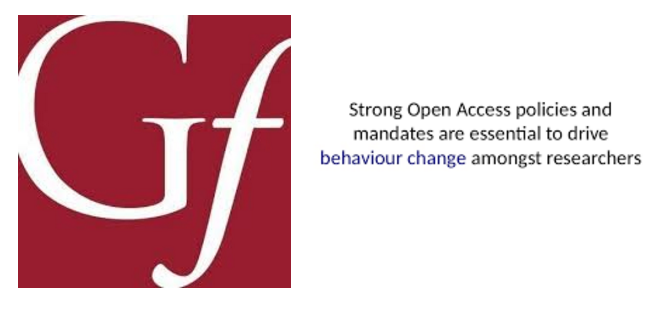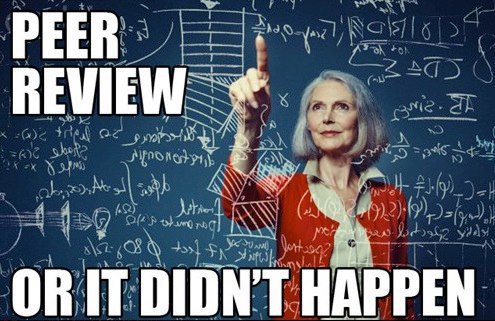
Gates Foundation funded research face challenges to publish on top-tier journals
Researchers funded by the Gates Foundation are facing difficulties publishing on some top-tier journals. This is due to open access (OA) policy that the Gates Foundation and journal publishers follow, according to the Nature’s writer Richard Van Noorden.
The Gates Foundation in 2014 put open access policy that mandates immediate open access publishing. It also requires researchers to make their research data open. This policy came into effect starting January 2017. However, open access policies many top-tier journals such as Nature, Science, the New England Journal of Medicine (NEJM) and the Proceedings of the National Academy of Sciences (PNAS) have do not allow immediate open access. They impose embargo period that ranges from six months to one year depending on the type of discipline.
The Gates foundation is not considering revising its policy or exempting these journals. As a result, some research findings might not be published on these journals. To address the issue, there is ongoing discussion between journal publishers and the Gates Foundation, according to the Nature. In the past, the US National Institutes of Health (NIH) forced journals to comply with its OA policy requirements.
According to the Nature, about 2000 to 2500 articles funded by the Gates Foundation published each year. Most of them, around 92%, are published on journals that comply with what the Gates Foundation requires. That means only 8 % of them will be affected by the Gates Foundation’s OA policy that does not allow embargo imposition.
Different research funders had different open access policies. For instance, the Wellcome Trust allows publishers to impose embargo period (max one year) on research it funds. Read more

The quality of scientific publications will benefit from a revolution in the peer review models.
The peer review system was created in the 20th century as a means to ensure the quality and integrity of scientific research. Until recently, peer review mostly took place before articles have been published, relying on ‘single blind’ and ‘double blind’ processes. ‘Single blind’ refers to a review system where reviewers remain anonymous to the authors. In the ‘double-blind’ review, both the authors and the reviewers are anonymous to each other. The two models are meant to limit the degree of bias in reviewing processes.
Though it has played a pivotal role in improving the quality of scientific articles, the traditional peer review system has fallen under criticism. Among the academic community, there a growing feeling that traditional peer review is failing at accomplishing its core objective: ensuring scientific quality. With the traditional peer review system, transparency is limited by the fact that the reviewers’ comments are not made public. Besides, the criteria by which scientific articles are accepted or rejected can be rather blurry sometimes. These challenges have forced publishers and researches to look for alternative approaches of reviewing scientific articles.
Open peer review
The whole idea behind open peer review is to achieve a high level of transparency in scientific publications. This approach requires that both the manuscripts, the reviewers’ names and comments and the authors’ response are made available for public scrutiny. Here, authors see who reviewed their work. It also limits reviewers’ bias (which often leads to the acceptance or rejection of an article based on non-scientific grounds) while helping them get due credit for their work. Moreover, the reviewers’ comments released with the manuscript might provide additional and useful information for the readers.
Post peer review
Post peer-review happens after unreviewed articles are published or put online. The objective is to replace or improve pre-publication peer review with post publication comments and critics.
Post review may take three shapes. In the first case, reviewers are formally invited by editors to review the article once it has been published. F1000Research and Copernicus are two major journals pursuing this approach. In the second case, practiced by publishers such as Science Open and The Winnower, unreviewed articles are analyzed by volunteers. Lastly, in the third approach, independent peer reviewers revise papers on third party websites. PubPeer and PubMed Commons are two platforms dedicated to post peer review. Research shows that most online comments about unreviewed articles are negative. To balance over criticism, PubPeer moderates comments whereas PubMed Commons allows only registered users to comment.
All things considered, post peer review makes publishing fast and transparent. Nonetheless, the model has its own flaws. One of the major issues is that voluntary reviewers may not have the required skills to critically judge a scientific work. In addition, some journals might not receive reviews and discussions are fragmented. Another challenge of post review, which is often overlooked by many experts, is the reliability of papers which are not yet reviewed for citation.
Read more
International Open Access Week
This year’s international Open Access week will be held from 17 October till 27 October 2016.

By Sonja Puzic|In a sea of information that’s just at our fingertips, it can sometimes be difficult to distinguish between scholarly articles and bogus research that’s harmful to science.
The issue is even more pressing with the proliferation of so-called “predatory publishers,” who often distribute poorly-vetted or fake research.
We answer some questions that can help you tell real science apart from junk.
What is a peer-reviewed article?
Peer-reviewed (also called refereed or scholarly) articles are written by researchers, doctors or scientists and then carefully vetted by other experts in the same field. The peer reviewers check the quality of the research, the methodology and the procedures used to evaluate the data. They may suggest revisions or reject an article that doesn’t meet scholarly criteria. It can take a long time before the article is published, due to the rigorous vetting process.
Why are peer-reviewed journals important?
Peer-reviewed publications adhere to strict guidelines and research standards. Articles that go through the peer-review process are held to the highest standards in each field of research and considered highly credible. Authors are also required to provide clear explanations of how they conducted the research, reference all of their sources of information and declare any potential limitations of their experiments.
Many peer-reviewed articles are also used as building blocks for further research in important fields of science and medicine.
What are open-access journals?
Open-access journals make scholarly articles available for everyone to read or download for free and without any restrictions. Open-access publications are still supposed to adhere to the rigorous peer-review process. PLOS is one example of a credible, reputable open-access publication.
What is “predatory” publishing?
In 2008, Jeffrey Beall, a U.S.librarian and associate professor at University of Colorado Denver, first started looking into the issue of “predatory publishing.”
The term often refers to publications that seek out submissions from researchers without specifying the fees they must pay until after they’ve submitted their research. The predatory publisher can essentially hold the manuscript “hostage” until the author pays to either get the article published or withdrawn. When submitted articles are published, that is often done without any peer reviews or proper editing. That can seriously damage the author’s reputation.
Beall is considered an expert in predatory publishing. He has compiled a list of potential, possible, or probable predatory scholarly open-access publisherson his website.
When he started the list in 2011, it only had 18 publishers. In 2016, that number soared to 923.
Beall has also published a document that lists criteria he and others use to detect a predatory publisher.
According to that document, red flags include:
- When the publisher’s owner is identified as the editor of each and every journal published by the organization;
- When one or more journals have the same editorial boards;
- When the publisher sends spam requests for peer reviews to scholars unqualified to review submitted manuscripts;
- When the publisher charges authors for publishing but requires transfer of copyright and retains copyright on journal content;
- When the publisher has poorly maintained websites, including dead links, prominent misspellings and grammatical errors on the website.

